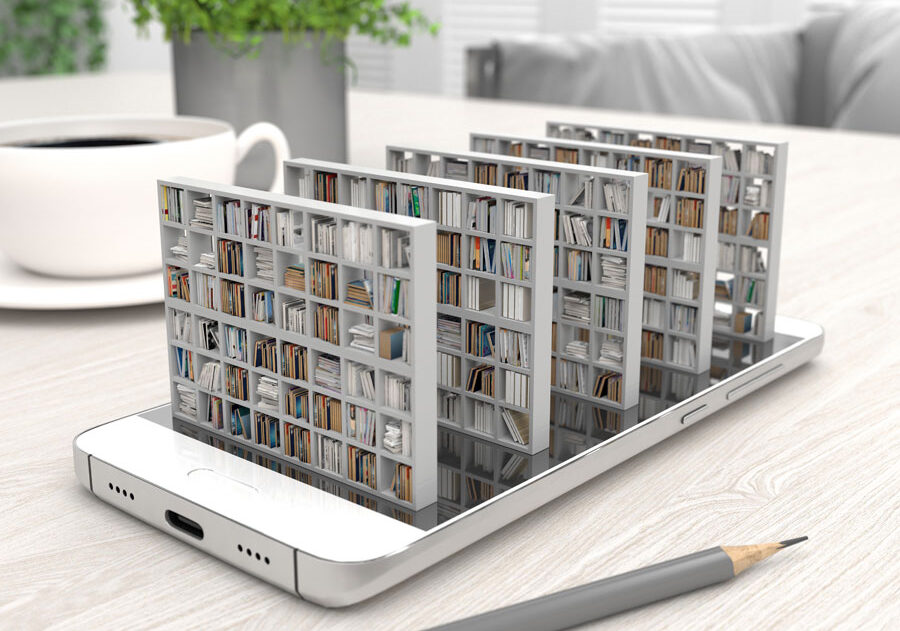
What Is a Digital Collection or Digital Library?
Learn
Have you Accessed a Digital Collection or Library Before?
Whether you’re a researcher, student, librarian, or bibliophile, it’s likely you’ve accessed a digital collection or enjoyed a digital library like the Afro-American’s digital newspaper collection. Using these convenient resources may lead you to wonder how to make your own collection sharable online. In order to impact a community, the digitized document must be given wider access.


What Does a Digital Library Consist Of?
A digital collection, also known as a digital library, is any collection of files that has been digitally preserved and is accessible on the internet or through software. A digital library may contain manuscripts, newspapers, books, journals, images, audio, and video.
There are all kinds of digital libraries. If you’ve recently watched a movie on Netflix, read a magazine on Google Books, researched history using the Library of Congress’ website, or rediscovered a favorite classic book on Project Gutenberg, you’ve accessed a digital library without even knowing it.
Why Create a Digital Library?
Digital collections and libraries are a great solution to the “what now?” question that often follows a digitization project. Digitized documents can be stored online or on a local server. The storing itself doesn’t ensure the digitized documents are usable, however. A stored but inaccessible digital document is only one step removed from a stored but inaccessible physical one. A digital library also allows you or an archivist to keep watch for any hardware or software that may become obsolete. You don’t want technology to keep you from your collection.Want a digital collection but don't want to manage it yourself? Anderson Archival can not only create your digital library but can serve as a site administrator, monitoring files, access, and preventing misuse.
How Are Digital Collections and Document Preservation Connected?
Historical documents, whether they’re significant to your individual organization, family, or a larger community, are usually made of paper, parchment, or other delicate materials. Nothing lasts forever. All it takes is a flood, fire, or misplaced cup of coffee to turn an important piece of history into dust.
Digital libraries are user-friendly ways to organize and view your newly-digitized collection. Digital document preservation guarantees that your collection won’t be erased by the passage of time.

With all the options for creating a digital library, where do you even begin?
Anderson Archival is here to help you sort through all the possibilities and find the best solution for your unique collection. Don’t settle for a library software that doesn’t fit your collection’s needs.

What Does a Digital Library Look Like?
Anderson Archival recommends several different options, depending on how you intend to use your collection. If your digital document collection is going to be accessed by a select few users, you may consider storing the collection on a local server connected to only a few machines (with an additional backup stored securely on the cloud, just in case).
If your collection will be used by an organization or a large number of internal users for research or education purposes, a cloud server or digital access management systems (DAMS) may be the best solution for you.
If you want to make your collection shareable online for the world, you might consider a website or pre-built gallery software for easy access. Depending on your use case, you can also create secure subscription-based access.
Build Your Own Digital Library
The first step in building a digital library is digitizing the content it will contain. Partnering with an archival company can help all kinds of collections by creating plans for digital libraries and preserving the electronic files.
When digitally preserving documents, one of the most important aspects to consider is how users will experience the data. Before you build your digital library, ask who and how: who is going to be using this collection, and how will the collection be most accessible? Search functionality is often a critical factor.
For the most basic digital libraries or digital collections, a simple surface-level search is often deemed sufficient. But for huge collections or those used for detailed research, a faceted search option is essential. In the case of digital newspaper collections, a user might expect to be able to search by date, feature, author, or even topic of discussion. Part of building a digital library is meeting—and exceeding—that expectation.
There are many types of digital preservation – make sure that the approach your digitization partner takes matches your end goal.
How Can I Make My Collection Shareable Online?
The purpose of many digital libraries is to make a collection shareable online, whether it’s a massive public database or a private-access application available through subscription or membership. Physical collections are often restricted in ways that make the contents accessible only to those who can travel, and even then puts the documents at risk of damage from being touched by many hands or other accidental harm. Rather than confining your collection to a box or behind a locked door, your custom digital library can be accessed by a potentially limitless number of people, filtered only by restrictions made by you.
The key to making your collection shareable online is to partner with a technical archival company to ensure that all steps in the digitization process are done right the first time. An experienced archival company also has access to resources for building the online library itself, keeping documents secure and accessible, and guaranteeing the digital library stays up and running.
Your collection has the opportunity to be appreciated in so many ways. Once digitized and made available online, sharing a book, newspaper, or historical document can be as simple as copying a link into an email and hitting send. New people will be able to access your online collection and learn about your organization. Your collection contains value and history that can educate and expand minds in a single click.
Making a collection shareable online ensures that it lives beyond time and place. Don’t wait to preserve your library and make it available to scholars, historians, and the world!
Subscribe to Our Newsletter
Digital preservation is about connecting to history. We do our best to bring you the important news and personal stories you’re interested in. We’re always looking for article ideas. Come learn with us!
